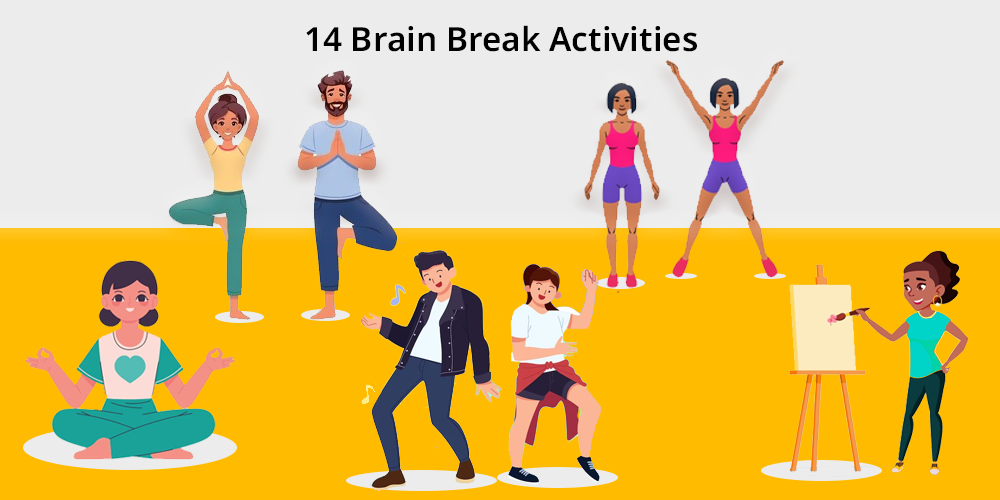
Children possess a vast learning capacity, but also require rest for developing minds. Prolonged sitting at school or home can result in boredom, frustration, and decreased focus.
Brain break activities have a significant influence. Short, simple and fun, these breaks enable children to relax, blow off steam, and return to learning refreshed.
Table of Contents
What are Brain Break Activities?
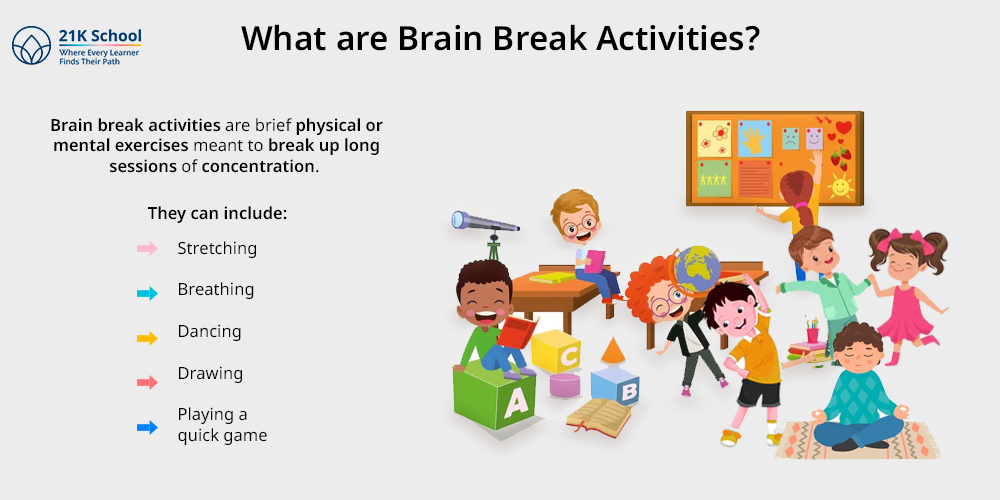
Brain break activities are brief physical or mental exercises meant to break up long sessions of concentration.
Brief breaks allow the brain to reboot so children can continue tasks more efficiently. They can include stretching, breathing, dancing, drawing, or even playing a quick game.
They can range from 2 to 10 minutes in duration, making it idle between long focus sessions. They require minimal or no preparation and can be integrated into home or school daily life.
Why Brain Breaks Are A Must For Kids?
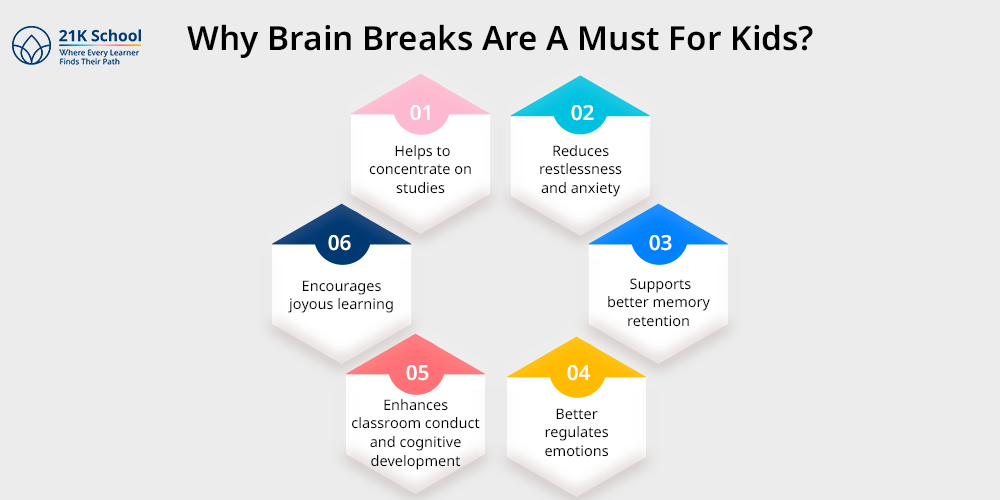
Young minds aren’t built to sit still for long stretches. Their brains need time to pause and reflect on what they have learned. Inculcating regular breaks into the study routine replenishes thinking with activity, rest, and creativity.
They help in several significant ways:
- Helps to concentrate on studies
- Reduces restlessness and anxiety
- Better regulates emotions
- Enhances classroom conduct and cognitive development
- Encourages joyous learning
- Supports better memory retention
Also read: Top 15 Memory Games for Kids
14 Fun and Effective Brain Break Activities for Kids
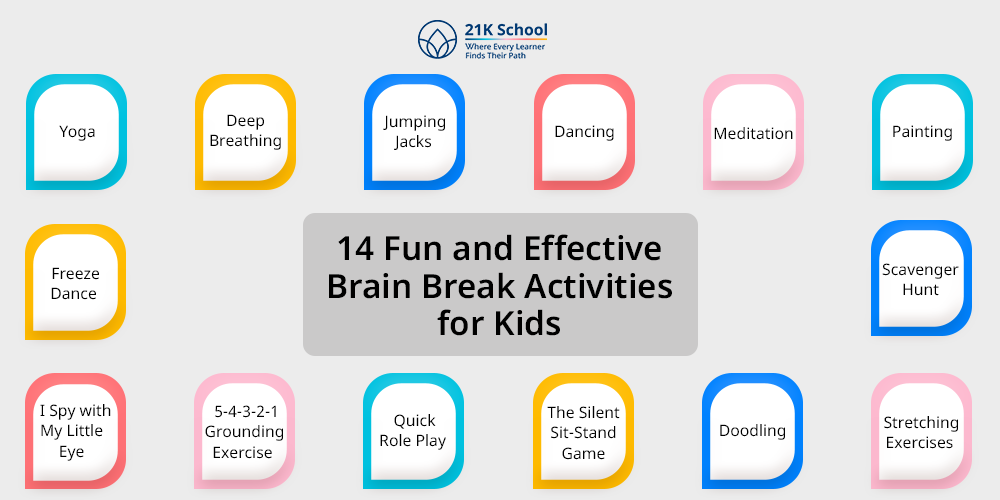
The following are 14 interesting and helpful brain break activities that can stimulate your child’s body and mind. They are suitable for all ages and can be applied at home, in the classroom, or even in virtual learning spaces.
1. Yoga
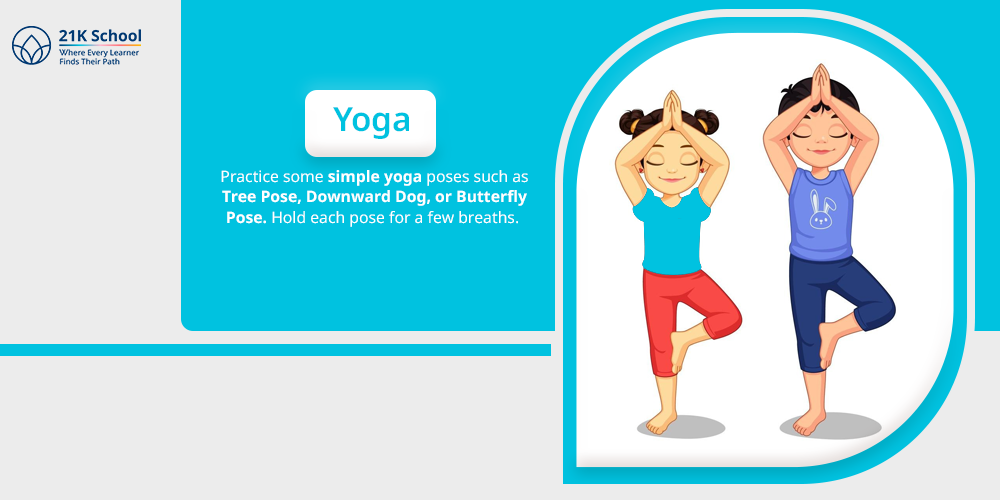
Practice some simple yoga poses such as Tree Pose, Downward Dog, or Butterfly Pose. Hold each pose for a few breaths.
Yoga develops balance, posture, and flexibility. It also teaches the body and calms the nervous system. Kids can watch a video or imitate a parent or teacher.
2. Deep Breathing
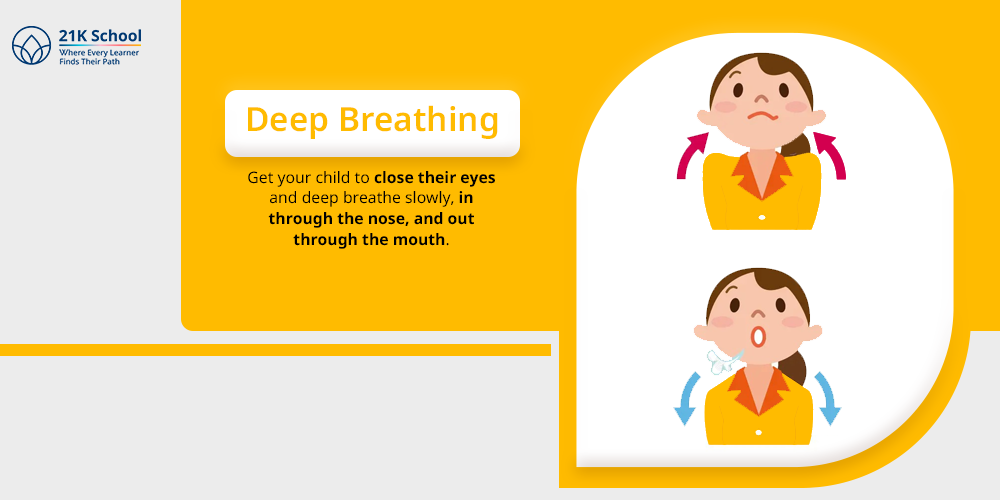
Get your child to close their eyes and deep breathe slowly, in through the nose, and out through the mouth. You can turn it into a game by imagining that you’re blowing up a balloon, smelling a flower, or blowing out a candle.
Deep breathing relaxes the body, slows the heart rate, and improves concentration. Sync breathing with slow movement. For example, have children inhale and raise their arms and exhale and lower their arms.
3. Jumping Jacks
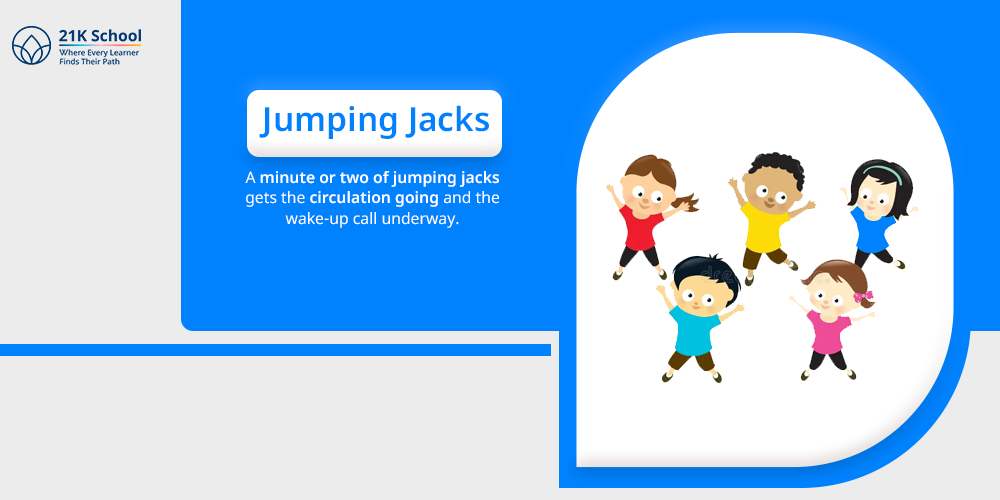
Jumping Jacks is an energetic activity that gets children revived and energised in no time. A minute or two of jumping jacks gets the circulation going and the wake-up call underway. It’s an excellent choice when your child fidgets or dozes off at study time.
4. Dancing
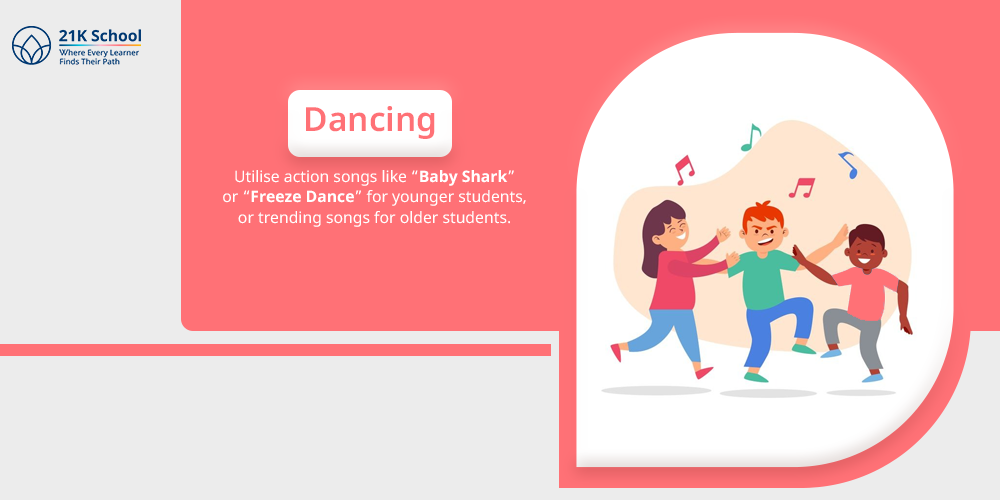
Play music and have a dance break. Utilise action songs like “Baby Shark” or “Freeze Dance” for younger students, or trending songs for older students. Dancing is good for physical health and adds fun in learning
5. Meditation
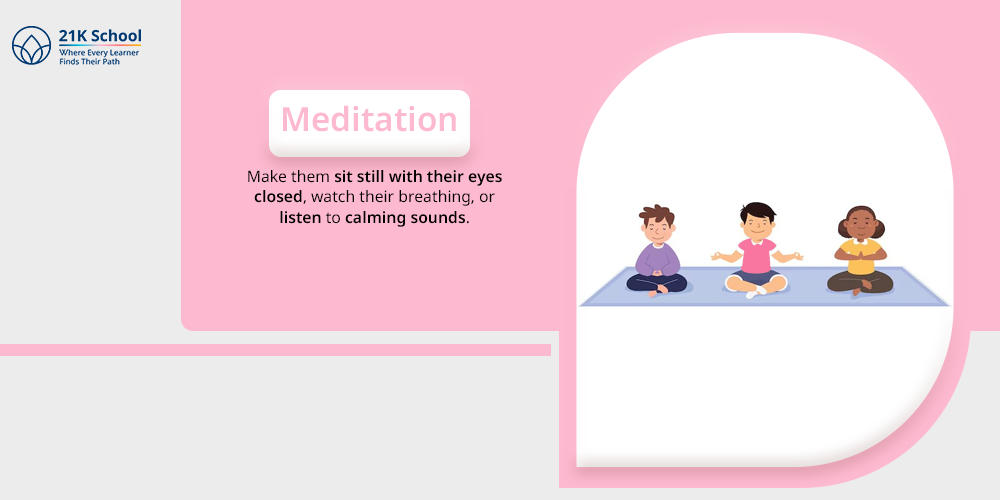
Simple meditation can even be taught to children. Make them sit still with their eyes closed, watch their breathing, or listen to calming sounds. Guided meditations are also very effective. It calms the mind and soothes the emotions.
6. Painting
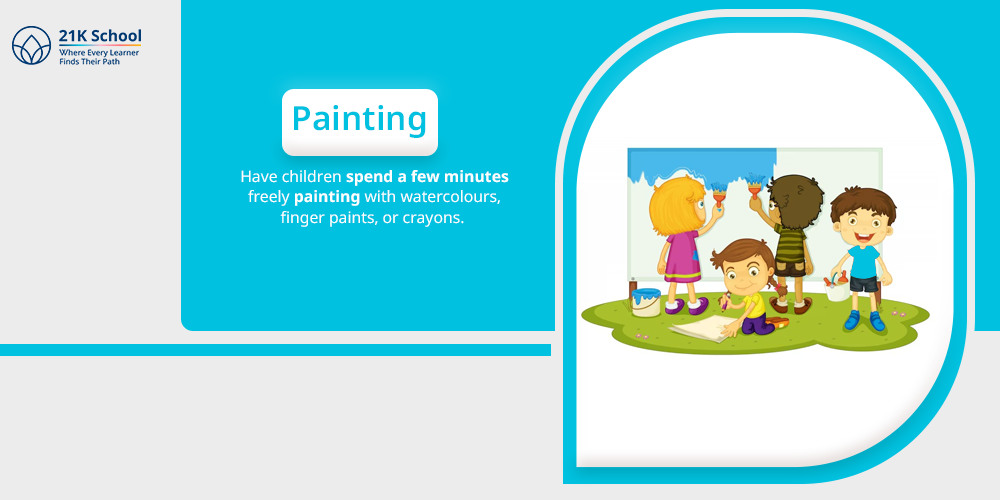
Have children spend a few minutes freely painting with watercolours, finger paints, or crayons. It is a creative release that lets their brain relax. Painting enhances hand-eye coordination and is a calming respite from mental processing.
Explore: Creative Painting Ideas for Kids
7. Freeze Dance
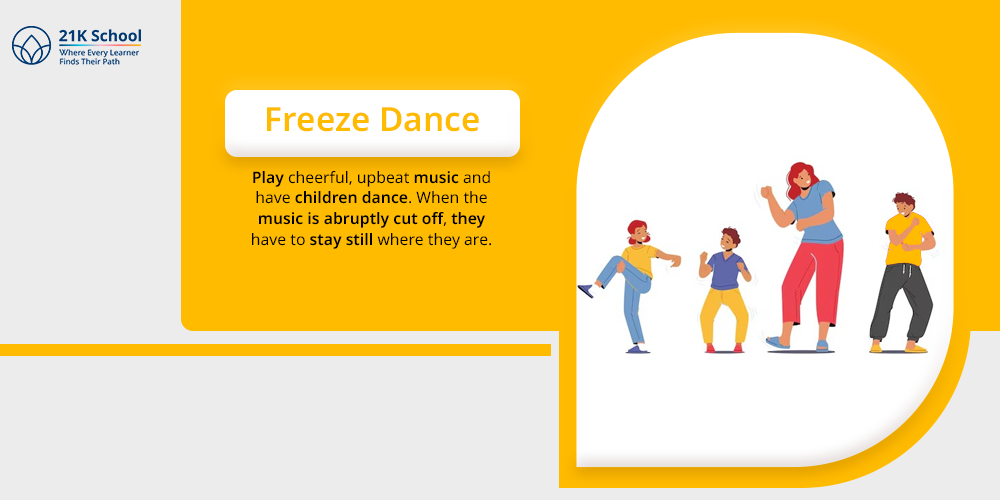
Play cheerful, upbeat music and have children dance. When the music is abruptly cut off, they have to stay still where they are. This fun game is all about developing body control, effective listening, and quick thinking.
8. Scavenger Hunt
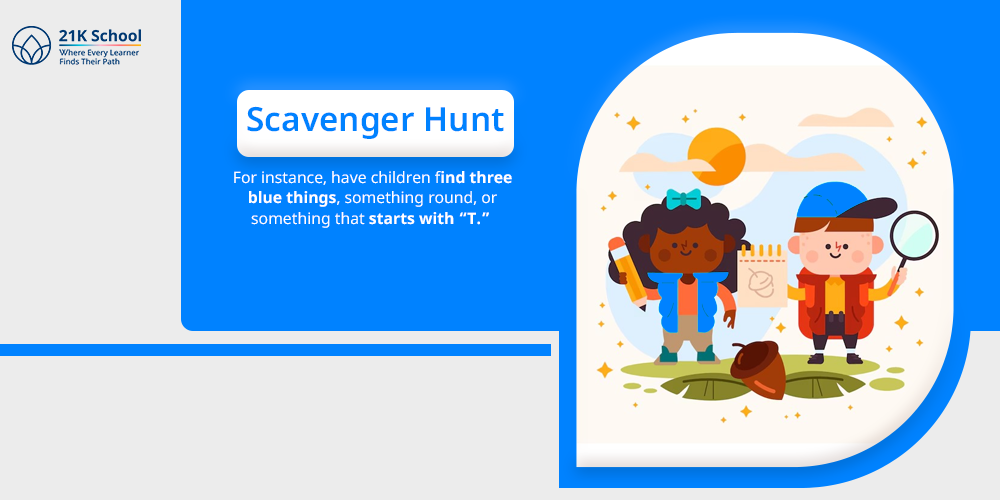
Do a quick scavenger hunt around the room or the house. For instance, have children find three blue things, something round, or something that starts with “T.” This combines movement with observation and speed.
9. I Spy with My Little Eye
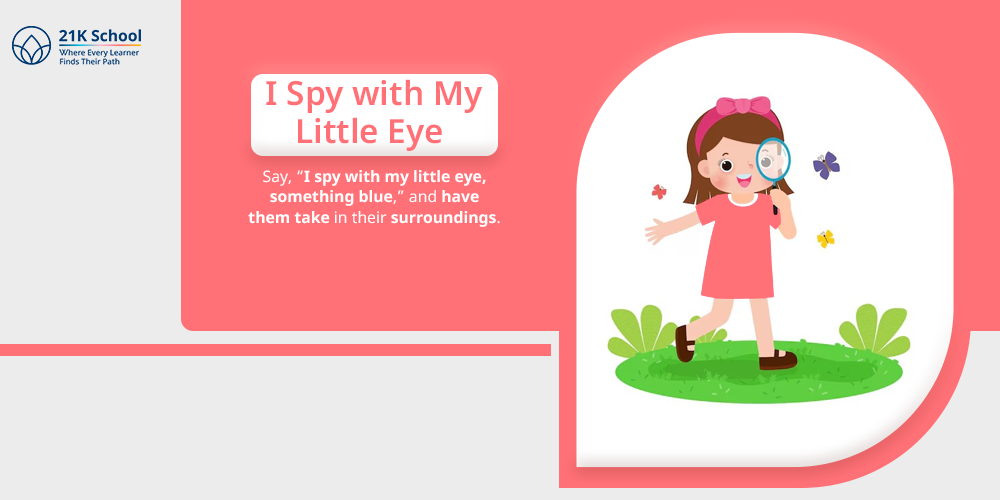
This is a peaceful game that makes children slow down and notice the world around them. Say, “I spy with my little eye, something blue,” and have them take in their surroundings. It creates concentration, vocabulary, and attention to detail, which is perfect for a peaceful reset.
10. 5-4-3-2-1 Grounding Exercise
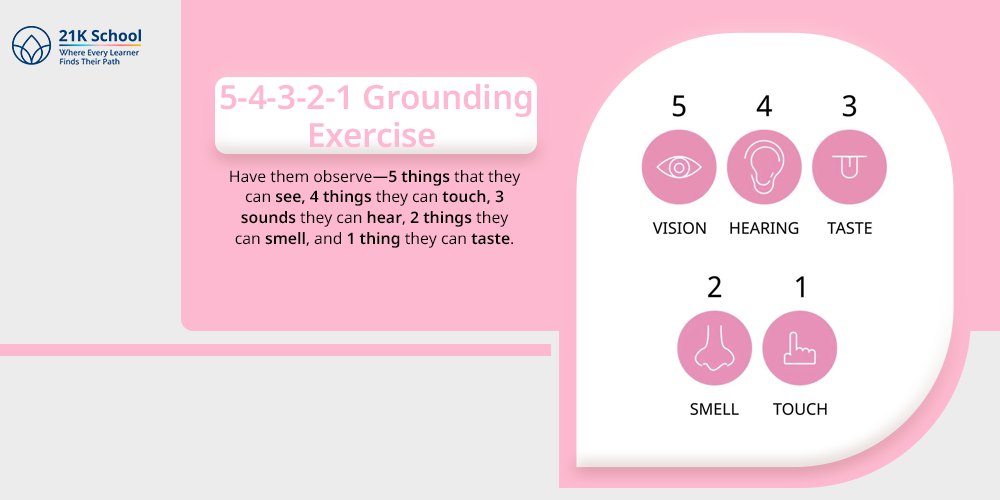
This sensorimotor mindfulness activity reminds children about being present.
Have them observe—5 things that they can see, 4 things they can touch, 3 sounds they can hear, 2 things they can smell, and 1 thing they can taste.
It is a strong, soothing remedy for worried or distracted children.
11. Quick Role Play
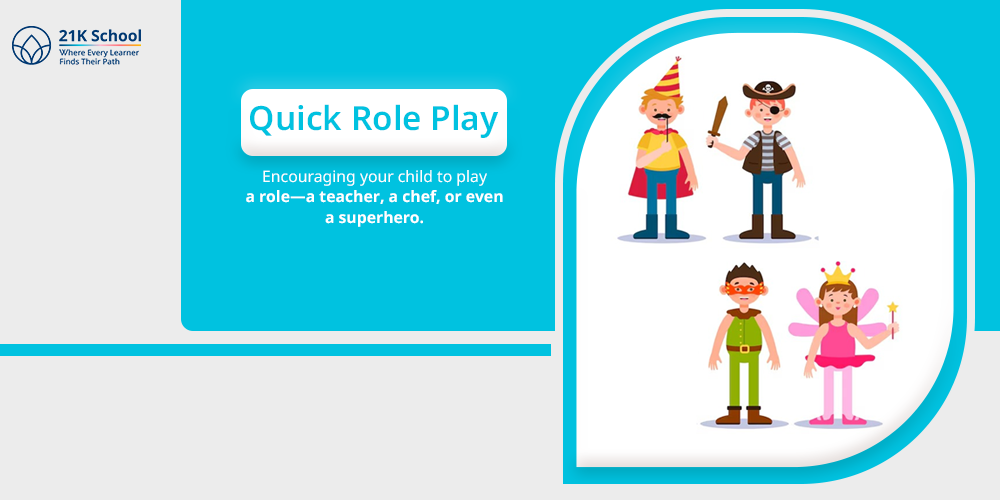
Encouraging your child to play a role—a teacher, a chef, or even a superhero— improves creativity, develops empathy, and gives a mental break from school-related activities. It also keeps them playful and laughing, thus making them more relaxed.
12. The Silent Sit-Stand Game
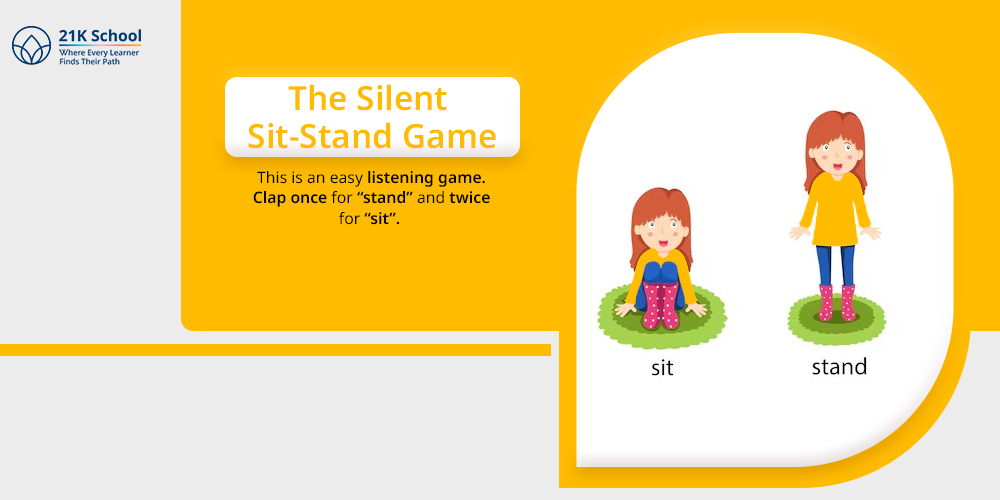
This is an easy listening game. Clap once for “stand” and twice for “sit”. The game doesn’t allow anyone to speak. This activity promotes self-control, concentration under pressure, and quick response, all within a quiet game.
13. Doodling
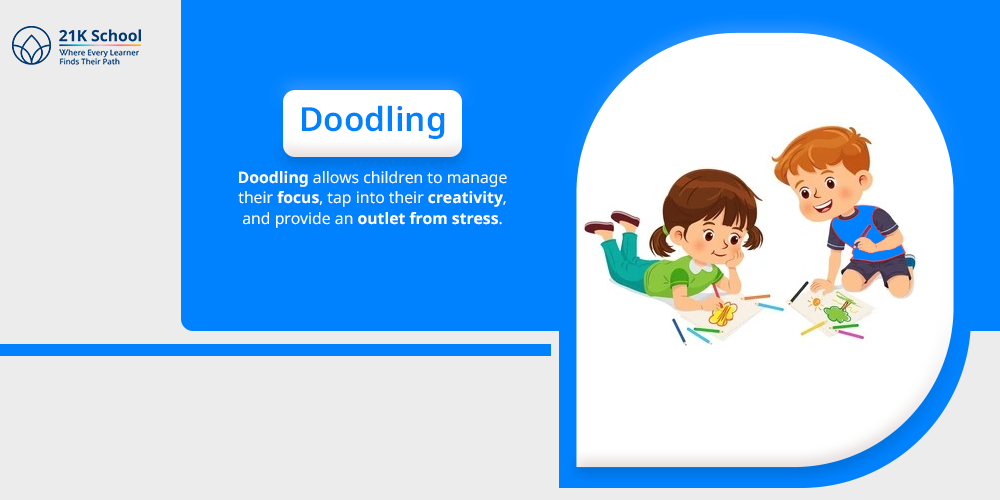
Doodling allows children to manage their focus, tap into their creativity, and provide an outlet from stress. You can even have specific doodle challenges, like drawing exclusively with shapes, or only using one colour.
Get inspired: Top 10 Creative Drawing Ideas for Kids
14. Stretching Exercises
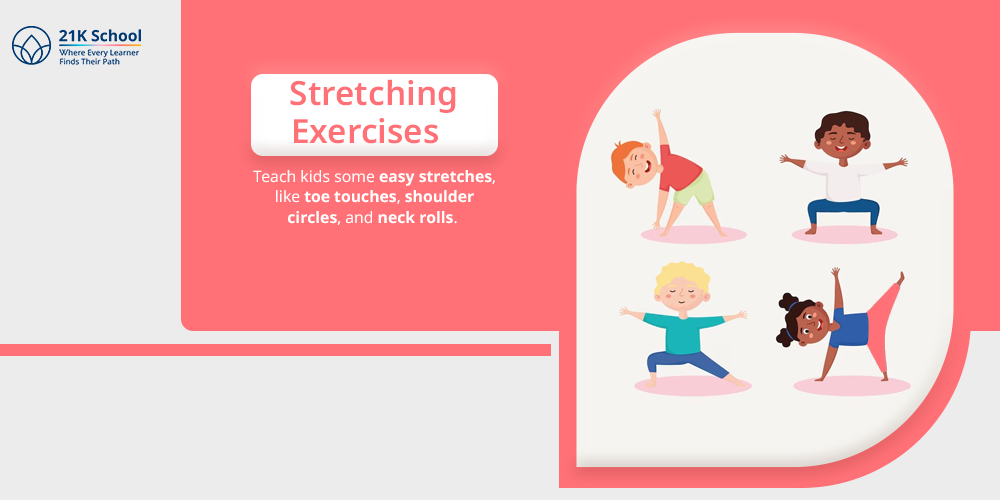
Teach kids some easy stretches, like toe touches, shoulder circles, and neck rolls. Stretching releases tight muscles from a long day and wakes their body up. It is ideal after long periods without movement, especially sitting or screen time.
Final Thoughts
Though breaks may seem insignificant, taking short breaks can greatly influence a child’s learning. These activities allow children to reset, recharge, and come back to learning with more focus and energy.
It is a good idea to have a variety of physical, creative, and calming brain breaks to keep the children engaged and without the risk of burnout.
Most of the examples provide simple steps and do not require any special tools, just a few minutes and some motivation.
As a parent, educator, or caregiver, incorporating brain breaks into a day can create more effective learning experiences, as well as happier children.
Your next read: Top 12 stress relief activities for students

